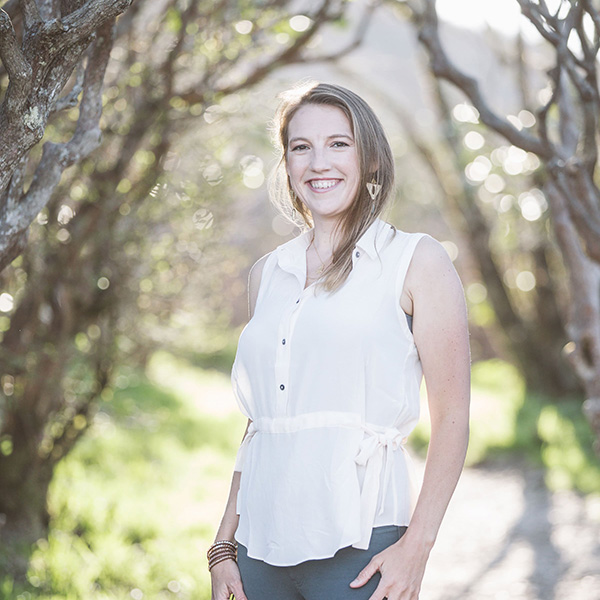
Is Your IBS Caused by a Hidden Bacteria? Here’s What You Need to Know About H. Pylori
If you struggle with digestive symptoms like bloating, constipation, and/or diarrhea then you might be familiar with the term IBS (Irritable Bowel Syndrome). IBS affects ~15% of the population, most of whom are women. (1)
But did you know there’s a little-known bacteria, called H. pylori (Helicobacter Pylori), that has been linked to the onset of IBS? (2)
Today I’ll review:
- what is H.pylori
- the signs + symptoms associated with it
- how it can lead to the onset of IBS
- how to test for H. pylori
- and what to do if you have it
What is H. pylori?
H. pylori is a bacteria that can cause an infection in the lining of your stomach or duodenum (the first part of your small intestine).
It’s been reported that up to 75% of the population is infected with H. pylori. (3)
Sometimes H. pylori isn’t a problem, but for others it can wreak havoc on their digestive tract, especially for those who have more harmful strains.
You may be thinking – H. Pylori doesn’t have anything to do with stomach ulcers. In fact, yes! H. pylori has been linked to everything from the onset of reflux, peptic ulcer disease (PUD), gastritis, and even stomach cancer.

How do you get H. pylori + signs & symptoms
There are a few different ways you can get H. pylori and we’ll review those here. We’ll also review common signs and symptoms that indicate you may have a problem.
How you get H. pylori
As I stated earlier, H. pylori is a common bacteria found in many people around the world and most commonly it is passed from person to person.
H. pylori can be passed from person to person by saliva but it can also be passed from contaminated food or water.
Some other examples of how it can be passed:
- by kissing someone
- eating from the same utensils
- eating foods that were contaminated by a person’s unwashed hands
The most common route? Acquiring H. pylori from your mother in infancy (4).
If you didn’t get it from your mother, then catching it from someone else in your adult years is quite possible. The likelihood of infection is equal to a person’s age (i.e. the older you are, the more likely you’ve come in contact with it).
Here’s the bad news: H. pylori can take root when you’re under immense stress.
When you’re under stress, this reduces your immune functioning, which makes it hard for your body to fight off H. pylori when it enters your digestive system.
Even more proof that there’s a strong connection between your mind and gut!
If your immune functioning is poor, H. pylori will easily take hold and make a home in your stomach.
What does an H. Pylori infection feel like? Let’s cover that next.

Signs + Symptoms of H. pylori
One of the first tell tale signs of an H. Pylori infection is the display of upper GI (gastrointestinal) symptoms.
If you suffer from stomach pain, reflux, heartburn, excessive belching, or a feeling like food is sitting in your stomach, then you’ll want to take note.
Other symptoms could include:
- a dull burning pain in your stomach, usually a few hours after eating and at night
- bloating
- nausea
- indigestion (dyspepsia)
- difficulty swallowing
- tar colored stools, indicating a bleeding ulcer
How can H. pylori lead to IBS?
Picture your gut as a finely tuned orchestra, and H. pylori is the sneaky disruptor slipping in to wreck the show. This troublemaker doesn’t just hang out—it releases a chemical called urease, which neutralizes your stomach acid, making it harder for your body to break down food properly (5).
Now, without enough stomach acid, undigested food particles slip past the usual checkpoints and make their way further down your digestive tract, eventually reaching your colon.
That’s when things really get messy—H. pylori starts wreaking havoc on your gut motility, sparking inflammation, and throwing your microbiota completely out of whack. Those larger undigested food particles? They provide fuel for opportunistic bacteria and pathobionts which leads to symptoms of gas, bloating, constipation and diarrhea (6).
And the chaos doesn’t stop there. By messing with your stomach lining, it also disrupts the gut-brain connection, potentially triggering slowed gut motility leading to constipation. It’s the perfect storm for digestive disaster.
How to find out if you have H. pylori
If you suspect you have an H. pylori infection, you’re probably wondering how to confirm it. Luckily, there are several ways to test for this sneaky bacteria, each with its own level of accuracy.
One of the most common methods is breath testing, which is often used in doctor’s offices. It’s quick, non-invasive, and gives you results in real-time.
For a more thorough examination, gastrointestinal (GI) doctors often rely on biopsies taken during an endoscopy. While this method is highly accurate, it’s also more invasive and can be uncomfortable for many patients.
As a gut health nutritionist, though, my favorite approach is the comprehensive stool test. This method is a fantastic, non-invasive way to detect the presence of H. pylori.
The stool test is simple, convenient, and highly effective at identifying H. pylori if it’s lurking in your gut. Plus, it’s far less invasive than a biopsy, making it a more comfortable option for many people.

How to address your digestive issues in the right order
When a patient comes to me with both upper GI pain AND IBS symptoms, one of the first things we consider is whether H. pylori could be at play.
Occasionally, a stool test will reveal its presence. However, it’s important to note that qPCR stool tests—often used by Functional Medicine practitioners—can deliver false positives, leading to unnecessary antibiotic + antimicrobial treatment.
That’s why it’s crucial to use the gold standard in comprehensive stool testing: Shotgun Stool Testing. This method provides accurate results, dodging treating something that isn’t actually there.
By using this comprehensive stool testing, we’re able to prioritize what to address first and tackle the root-causes in the proper order.
Food Sensitivity Testing can provide instant relief for upper GI pain and IBS symptoms. With my clients, this is actually the first step we utilize before digging in and addressing microbiome infections.
This strategy ensures we’re not just guessing at the symptoms but addressing the real underlying causes, helping to restore gut health effectively.
Here’s the Best Part: I’ve Got Your Back in Finding Your Way to True Vitality
No more guessing games, no more randomly eliminating foods and hoping for a miracle.
I’m here to help you design a clear, customized path to wellness that’s built specifically for your body. We’ll pinpoint the exact foods causing your gut issues, then work together to create a plan that heals and restores balance. This isn’t a one-size-fits-all approach—it’s a solution tailored to you.
Ready to uncover the true cause of your gut inflammation and start your transformational gut healing journey? My program is custom-built and reserved only for those who’re ready to go all in. Schedule your digestive assessment with me to get started.

